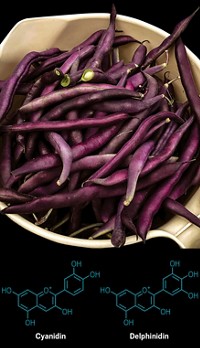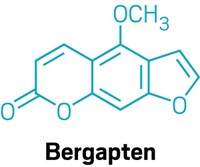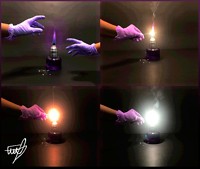Advertisement
Grab your lab coat. Let's get started
Welcome!
Welcome!
Create an account below to get 6 C&EN articles per month, receive newsletters and more - all free.
It seems this is your first time logging in online. Please enter the following information to continue.
As an ACS member you automatically get access to this site. All we need is few more details to create your reading experience.
Not you? Sign in with a different account.
Not you? Sign in with a different account.
ERROR 1
ERROR 1
ERROR 2
ERROR 2
ERROR 2
ERROR 2
ERROR 2
Password and Confirm password must match.
If you have an ACS member number, please enter it here so we can link this account to your membership. (optional)
ERROR 2
ACS values your privacy. By submitting your information, you are gaining access to C&EN and subscribing to our weekly newsletter. We use the information you provide to make your reading experience better, and we will never sell your data to third party members.
Education
Newscripts
Perfect Toast, A Tonic For The Skin, Titanium Sipping
August 15, 2011
| A version of this story appeared in
Volume 89, Issue 33

Making toast: It’s the classic chemical transformation that takes place every morning in kitchens across the country. But as reactions go, it’s a tricky one to monitor. Too little time in the toaster and you end up with warm bread; too much time and your bread turns black.
Now, food researcher Dom Lane reports that it takes precisely 216 seconds to make the perfect piece of toast. That’s in a 900-W toaster with the dial set to 5 out of 6, or 310 °F. Lane also suggests using bread that’s 13–14 mm thick and taken directly from the refrigerator. And he says that using 0.44 g of butter per square inch of toast is optimal.
“When you pop a piece of bread in the toaster it gradually turns the bread molecules brown. The process is known as the Maillard reaction. It’s nature transforming the mundane into the magical,” writes Lane on the Facebook page of the Love Toast Community, a site established by Vogel’s, the British bread company that commissioned Lane’s study.
“Fundamentally, it’s about the ratio of surface to inner elasticity,” Lane continues. “In an untoasted slice of bread it’s obviously 1:1, or a difference of 0, but during toasting moisture is expelled, reducing the elasticity of the bread’s surface—measured in pascals, the international unit of bendiness—until it achieves a deformation limit. In other words, the toast gets crispy. This initial insight led us to develop the ‘Vogel’s Curve,’ which plots the varying degrees of crunchiness and color during toasting.”
From an earlier survey that determined the most popular color of toast, Lane was then able to use mathematics to determine that, in the ideal slice of toast, the outside is 12 times as crunchy as the inside.
According to the July 22 issue of the Daily Mail, Lane used 2,000 slices of bread to test his hypothesis.
Speaking of toasts, sangria-sipping sun worshippers recently raised their glasses in response to a study from scientists in Spain, who reported that polyphenols found in grapes can protect human skin cells from the oxidative damage of ultraviolet rays (J. Agric. Food Chem., DOI: 10.1021/jf103692a).

The report, from researchers at the University of Barcelona and the Institute for Advanced Chemistry of Catalonia, sent science reporters into a tizzy, with headlines, such as the one that appeared in the July 31 issue of the Telegraph, declaring, “Drinking Wine Could Help To Stop Sunburn.”
Of course, close inspection of the actual paper should stop sunbathers from swapping their sunscreen for shiraz. The authors suggest that, on the basis of their in vitro studies, topical creams made with polyphenolic compounds from grapes could help prevent the formation of damaging reactive oxygen species in skin exposed to ultraviolet light. There’s a nice debunking of the popular press’s take on the paper at the Happy Science blog (sciencehastheanswer.blogspot.com).
Titanium, as most chemists know, is a useful element. Compounds made with the stuff can color paint white, render windows self-cleaning, and catalyze the production of polypropylene. But why do all that with this wondrous metal when you can make a drinking straw out of it?
According to the folks at online retailer ThinkGeek, which sells the Titanium Straw for $17.99, titanium has low thermal conductivity, so the straw won’t get too cold or too hot. Furthermore, they note, “titanium is also super strong and light weight, which means you can stab it right into the fruit (or person, if you’re a vampire) you wish to drink.”





Join the conversation
Contact the reporter
Submit a Letter to the Editor for publication
Engage with us on Twitter